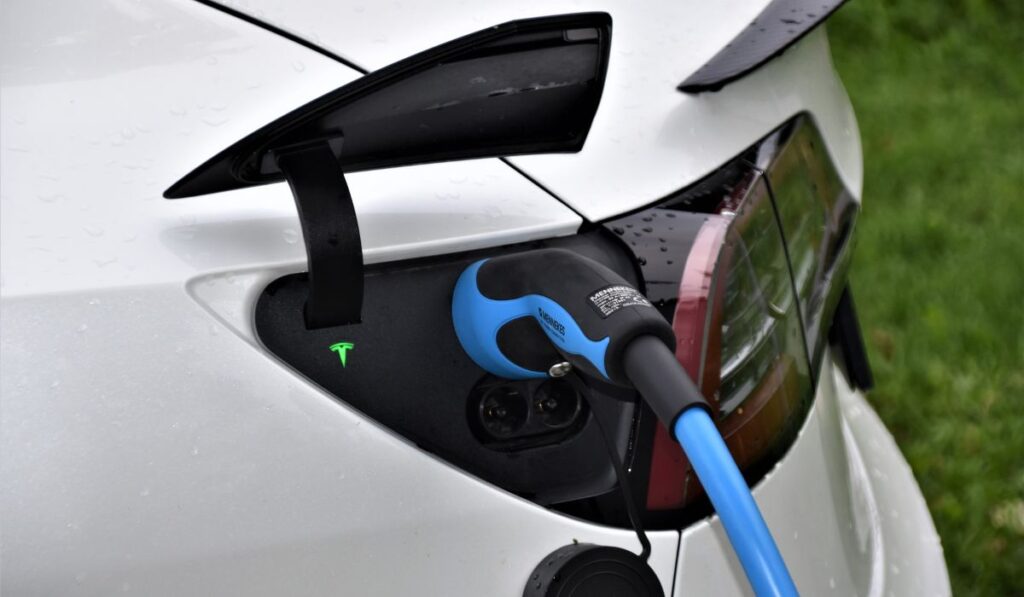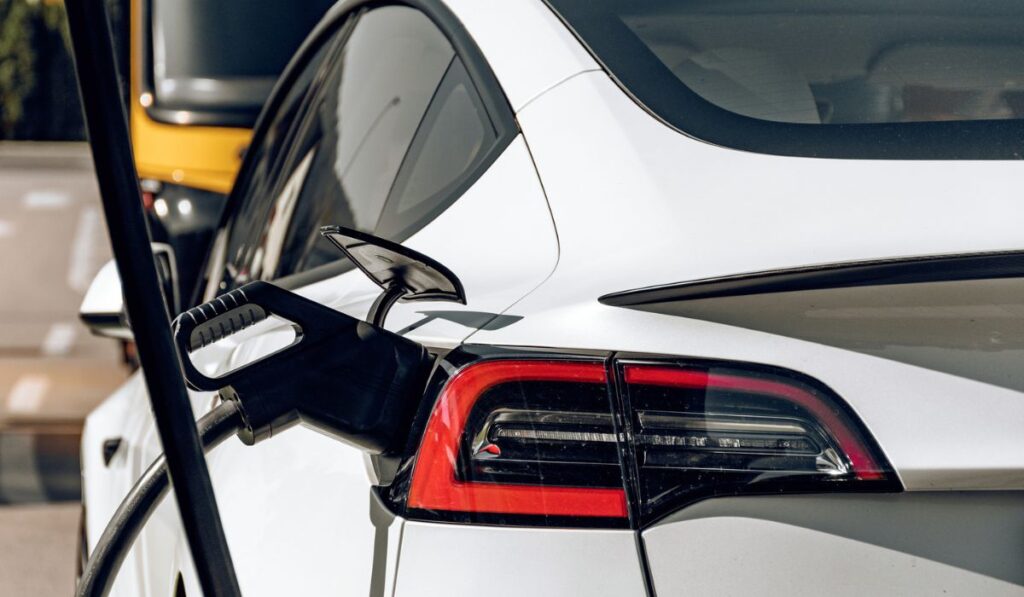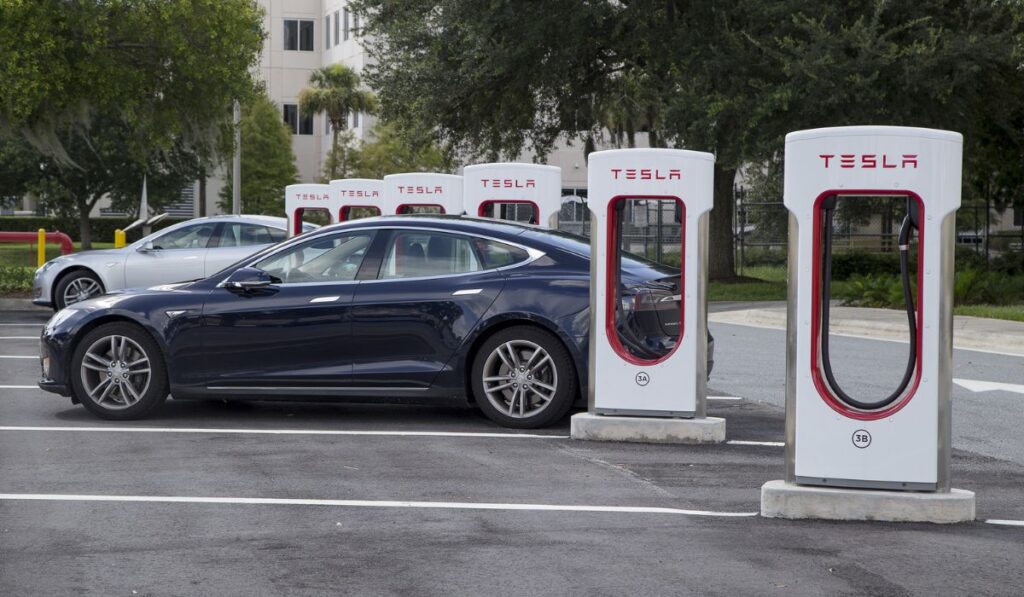Tesla is the automotive company that has boosted the electric vehicle industry in recent years due to innovation and affordability, especially when it comes to charging costs. The cars are not necessarily accessible for all budgets, but the charging cost can make the investment worthwhile.
The exact cost to charge your Tesla will depend on the vehicle model and the charger you use. For at home chargers, most models cost around $9-$15 to bring to a full charge. When charging outside the home, which state you are in will dictate the price but it is usually around $10-$30.
Let’s look at how much it can cost to charge different Tesla models and help you better understand whether it is more efficient and cost-effective than gas.
How Much Does it Cost to Charge a Tesla?

Seeing as it is possible to charge a Tesla at home, as well as at dedicated charging stations, there are varying prices for how much it costs to charge one of these electric vehicles depending on where you live and how you charge.
On average, most Tesla owners can expect to pay around $13.96 for a full charge. Yet, it can cost as little as $9.62 for specific models.
The cost to charge your Tesla will depend on your chosen charging component. Charging at home on a 120-V outlet can cost more as the car will require many hours of charging to reach full. Whereas a 240-V at-home charger like this one (on Amazon) can offer fast charging, resulting in a reduced cost.
Furthermore, using Supercharger Tesla charging stations can cost more as you will attain a faster charging time.
What Are the Different Tesla Models?
There are various Tesla models and due to their varying battery capacities and capabilities, the cost to charge varies.
Here is a list of the different Tesla models are how much it costs to charge each one.
Tesla Model X
There are two variations of the Tesla Model X, the Plaid model and the Long Range. The EPA estimates the Long Range’s range to be 360 miles, while the Plaid’s range is thought to be 340 miles.
The national average of charging at home in the US is 14 cents per kWh. Hence, multiplying the size of the Model X with the average charging cost equates to $14 for full power.
But because some chargers are more effective than others, we also need to take the sort of charging station into consideration. 80% to 90% efficiency is a common range for Level 1 and Level 2 chargers, which indicates that 10% to 20% more power is required to charge the battery.
Considering that these chargers typically operate at 85% efficiency, a full charge needs 15% more power.
Level 3 chargers are much more effective than other Tesla chargers and the cost of a supercharger varies. With typical rates of 26 cents per kWh, a charging station might cost $26 to fully power an electric vehicle.
Overall, the Long Range has slightly better charging capabilities so it will cost slightly less to charge. Plus, you can save money by charging the car at home.
Tesla Model S
The Model S also comes in two variations – Long Range and Plaid – that offer a 100 kWh battery.
The projected total mileage range for the Model S trims differs from the Model X, though. The Plaid’s estimated range is 396 miles, while the Long Range’s is 405 miles.
Using the same calculations and national averages, it would cost around $16.10 for at-home charging and around $26 for supercharging stations.
Tesla Model Y
Tesla’s Model Y contains a smaller battery than the Model X and Model S, which gives it a reduced weight. Because of this, the Model Y is quicker to charge and less expensive.
Both trims – the Long Range and Performance – contain a 75 kWh battery. The expected range for the Long Range is 326 miles, whereas the estimated range for the Performance is 303 miles.
The average cost for at-home charging is $12.08 and the superchargers can cost around $19.50.
Overall, it seems that at-home charging is easier and more cost-effective than using Level 3 chargers.
Plus, data shows that, out of the three Tesla vehicles here, the Model Y has the lowest expense per mile. It should come as no surprise that the Long Range version is more affordable than the Performance. This is the reason why the Long Range has a greater range despite having the same battery.
Luckily, Superchargers are not advised for everyday Tesla charging due to their high direct current (DC) output. Superchargers, on the other hand, offer a fast charge for drivers who are on the go or who are stopping for a rest during longer drives.
Factors That Affect the Cost of Charging a Tesla
Home Charging
Installing a Level 1 or Level 2 charger at home comes at a cost. They typically cost around $500, which will set you back before you begin charging at home. However, considering it is cheaper to charge your Tesla at home, you will soon make your money back.
Car Maintenance
If you maintain your car and look after its battery, the charging capacity will be easy to maintain. As a result, it will cost the same throughout the year to charge your electric vehicle. On the other hand, lacking maintenance could result in poor battery performance, hindering its charging capability and costing more to charge.
Type of Tesla
Different Tesla’s require different chargers and time to charge. As a result, the type of Tesla you purchased will have a huge effect on how much it costs to charge your vehicle each time. Additionally, some Tesla’s have a larger purchase price than others.
Insurance Rates
Most cars cost around $1,500 to insure for the year. Seeing as Tesla models vary depending on performance and battery capacity, the price for insurance fluctuates. The larger and longer-range Teslas cost more to insure. The lowest price to insure a Tesla is $2,000. Yet, the price of insurance can rise to $4,000 per year.
Is Charging Cheaper Than Gas?
It is safe to say that charging a car is cheaper than fueling it with gas. The national average to fuel a car with gas is $1,117 per year. The average cost to charge an electric vehicle for a year is $485.
However, keep in mind that charging and fuel costs depend on where you live and the type of vehicle you own.
What About Solar Charging?
You might wonder if using solar charging is cheaper than Level 1, 2, and 3 chargers. The answer is yes.
According to The Office of Energy Efficiency & Renewable Energy, solar energy was about 12.8 cents per kWh in residential regions in 2020. That works out to about 13 cents per kWh or almost a full cent less than what is thought to be the national average price of energy in the US.
This means that, depending on where you reside, charging your Tesla with solar panels could result in greater financial savings.
Keep in mind there will be an initial cost to install solar panels. Plus, remember that the price of installing solar panels on your home and the quantity of electricity the solar panels generate will rely on how much sunlight your roof receives.
Gas vs Electric: Which is More Cost-Efficient?

Gas-powered automobiles are less energy-efficient than electric vehicles. Electric cars use less energy to cover the same distance as gas vehicles because they put more of the energy in their batteries into motion. Reduced fuel expenses and greenhouse gas emissions result from this.
Furthermore, it is important to consider the investment cost. A new electric car typically costs about $10,000 more than the industry norm. However, as the EV market expands quickly and battery technology improves, this price margin is anticipated to significantly decrease over the next few years.
Tax benefits, which can reduce the cost of an EV by thousands, can help you offset some of that expense. Up to $7,500 for new EVs and, for the first time, $4,000 for used EVs are available through the government EV tax credit. Hence, you might be able to save money on all costs in the coming years and enjoy the cost-efficiency of an electric vehicle.
What is the Cost of Replacing a Tesla Battery?
It is a rare occurrence to need to replace a Tesla battery. However, it is possible to need one after you reach 200,000 miles.
The price of a battery replacement will depend on what type of Tesla you have. The most expensive replacement can cost around $20,000 for the high-end Tesla models. Yet, the average cost is between $13,000 and $14,000.
This cost doesn’t involve the labor fee, which will vary depending on where you go. Tesla themselves might be more expensive than a third-party garage.
Is a Tesla More Cost-Efficient Than Other Electric Vehicles?
Tesla’s are highly cost-efficient and relatively affordable to charge. However, they are not the most cost-efficient in the market. There are other brands that exceed the cost-efficiency rating.
The BMW i4 and Hyundai Kona Electric are two cars that top the charts. Yet, Tesla models are not far behind and cost only a little more to charge.
Hence, don’t be put off because they are not at the top of the list. The charging costs vary only slightly and you might only save a few cents per kWh when purchasing one of the non-Tesla models above.
It seems that lower-weight electric cars cost less to charge due to having smaller batteries. Yet, this means you might not be able to enjoy as extensive of a range as you enjoy with a Tesla.
Saving Money Charging Your Tesla
To save money charging your Tesla, it is best to follow the advice to charge the car at home. Although it might be more convenient to charge when you are out at a Supercharging station, it can cost almost twice as much for some models.
Furthermore, some other tips to help you save money when charging your Tesla include:
- Use a 240-V charger. Although it is possible to use a 120-V standard plug at home to charge your Tesla, it will take a lot longer and cost more money. Hence, use a 240-V charger instead and save your time and money.
- Avoid using a Supercharger too often. Overuse of a Supercharger can decline your battery’s efficiency and charge capabilities, so avoid using them too often and rely on Level 2 chargers instead.
- Charge in warmer temperatures. Batteries can be slower to charge when they are cold. Hence, keeping your Tesla warm can enhance charging times and cost you less overall.
Can Buying And Charging A Tesla Save You Money?

Yes, compared to purchasing a gas-powered car, buying a Tesla can save you money. Typically, your savings come from choosing to use electricity instead of gas, as well as the possibility of lower auto maintenance costs.
Additionally, refueling and maintaining a gas vehicle can be more expensive than charging a Tesla. Tesla vehicles usually require less maintenance because they have fewer moving components. Additionally, buying energy is frequently less expensive than buying gas.
Tesla’s not the most affordable electric vehicle. But, they are cost-efficient when it comes to charging, so they can save you money in the long run.
Is It Possible To Charge A Tesla For Free?
Superchargers once offered free charging at certain locations. However, this is not the case anymore. Tesla Superchargers cost more than at-home charging, which transforms their affordability and initial purpose. Maybe Tesla noticed they could make a lot of profit by charging customers for powering their vehicles.
